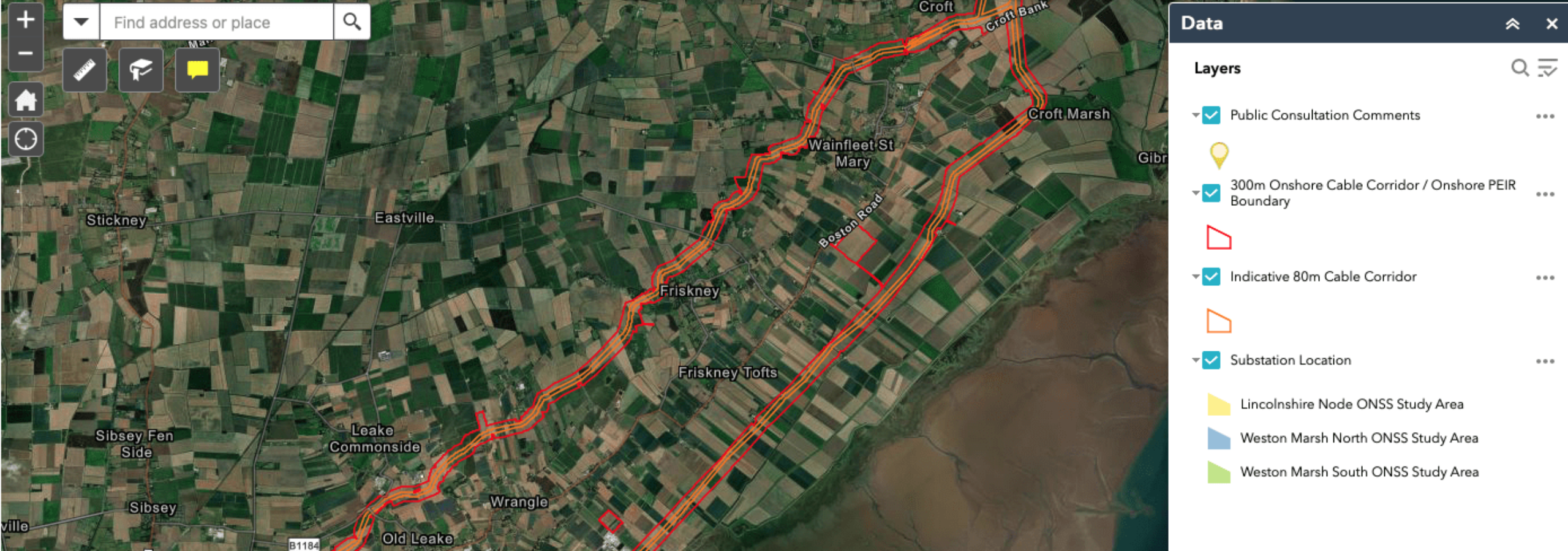Interactive Map
The Outer Dowsing Offshore Wind Interactive Consultation Map allows you to view the proposed cable route for the underground cables and substation area, jump to specific locations or postcodes, and measure distances between the cable route, substation and other objects.
You can view the map here.

